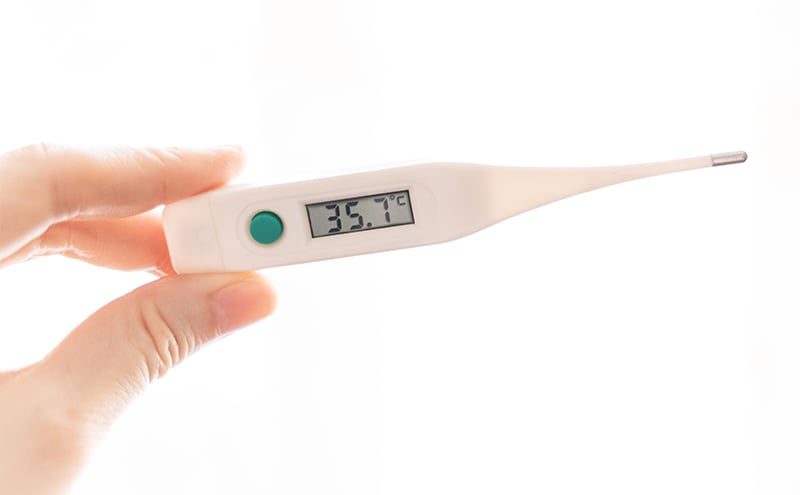
Induced Hypothermia after Cardiac Arrest – Does the Method Matter?
Introduction

OHCA is an important public health problem. 400,000 people suffer a sudden cardiac arrest in the United States annually. Across the country, approximately 12% of these patients will survive.1 However, there is significant variation in outcomes across communities and institutions. While such health inequities are troubling, these statistics are important, as they demonstrate that it is possible to achieve improved outcomes for these patients when high-quality systems of care are in place.2
Time to initiation of resuscitative efforts and restoration of blood flow are important to survival after cardiac arrest. However, there are also aspects of care after a patient arrives at a receiving facility that have an important impact on outcomes.3 One modifiable physiologic process after return of spontaneous circulation (ROSC) is reperfusion injury, which is a cascade of inflammation that can lead to cell injury and death in the heart, brain and other organs.4
Induced hypothermia – also called targeted temperature management – is shown to improve outcomes in patients who received mild induced hypothermia after two seminal trials published in 2002.5,6 Currently, hypothermia with a target temperature of 33-36 C is recommended in international post-resuscitation guidelines7 and should be implemented in the context of a broader strategy of critical care for a comatose patient with the post-cardiac arrest syndrome.8
Methods Available for Inducing Hypothermia
Methods for cooling can be generally divided into two categories: surface methods and internal methods. Surface methods can range from ice packs and fans to commercially produced cooling blankets and gel-adhesive cooling pads. Internal methods include specialized endovascular heat-exchange catheters, intravenous fluids, peritoneal cooling, dialysis and extracorporeal life support (ECLS).8 Of these, surface methods and heat-exchange catheters are most commonly used in current clinical practice.
The Importance of Temperature Control Profiles of Cooling Devices
These various methods available can differ in their temperature control profile, including speed of induction or time to achievement of target temperature, precision of temperature control, and control of the rewarming phase.
This is important, as time to initiation of cooling and achievement of target temperature, are predictors of survival with favorable neurological outcome.9,10 Additionally, head-to-head comparisons of cooling methods have shown that available devices vary in their rates of cooling, with endovascular catheters achieving the fastest cooling rates.11
The concept that faster time to target temperature is important might suggest that initiation of cooling in the pre-hospital setting would be beneficial. However, a randomized controlled trial (RCT) that assigned patients to usual care or 2 L of chilled IV normal saline in the pre-hospital setting found no impact on survival or neurological outcomes, with worsened risk of re-arrest in the group that received chilled IV fluids.12
However, recent systematic reviews and meta-analyses have further examined the effect of choice of method for induced hypothermia on patient outcomes.13,14 These found that use of internal compared to surface cooling methods was associated with a higher probability of survival with good neurological outcome, but no statistically significant difference in overall mortality. These reviews were limited by the fact that the majority of data comparing cooling methods is from observational studies. However, the fact that intravascular catheters can achieve faster cooling rates offers a plausible mechanism for the association with improved neurological outcome observed by both meta-analyses.
Regarding patient safety, surface devices were associated with a greater risk of temperature overshoot and arrhythmias, although this did not adjust for the presence of temperature-feedback control in the devices included in the analysis. There was no difference in rates of shivering, local injury, deep vein thrombosis, serious bleeding, pneumonia or sepsis between surface and internal devices.14
Emerging Methods for Cooling
In addition to induced hypothermia after resuscitation from cardiac arrest, the concept of intra-arrest cooling has also recently been investigated. Specifically, transnasal intra-arrest cooling was studied in the PRINCESS RCT. Transnasal devices target cooling of the brain using microcirculation in the nasal pathways and do not add intravascular volume, an important consideration given the negative consequences seen with chilled IV fluids. No statistically significant difference in survival or survival with good neurological outcomes was found in the overall study cohort. However, a subgroup analysis found that a greater percentage of patients with initially shockable rhythm had full neurological recovery, which has generated excitement about further exploring the clinical potential of intra-arrest cooling.
Conclusions
- Mild induced hypothermia has been shown to decrease reperfusion injury and improve patient outcomes following resuscitation from cardiac arrest.
- Faster time to initiation of cooling and to achievement of target temperature have been associated with improved neurological outcomes.
- Devices available for inducing hypothermia vary in the cooling rates achieved, with intravascular catheters achieving the fastest cooling rates.
- Pre-hospital cooling with chilled IV fluids has been shown to worsen the risk of re-arrest.
- Largely observational data has shown an association between use of intravascular catheters and improved survival with good neurological
- The concept of intra-arrest cooling is a future direction being explored.
References
- Benjamin EJ, Virani SS, Callaway CW, et al. Heart Disease and Stroke Statistics-2018 Update: A Report from the American Heart Association. Circulation. 2018;137(12):e67-e492.
- Nichol G, Thomas E, Callaway CW, et al. Regional variation in out-of-hospital cardiac arrest incidence and outcome. JAMA. 2008 Sep 24;300(12):1423-31.
- Sasson C, Rogers MA, Dahl J, et al. Predictors of survival from out-of-hospital cardiac arrest: a systematic review and meta-analysis. Circ Cardiovasc Qual Outcomes. 2010 Jan;3(1):63-81.
- Madathil RJ, Hira RS, Stoeckl M, et al. Ischemia reperfusion injury as a modifiable therapeutic target for cardioprotection or neuroprotection in patients undergoing cardiopulmonary resuscitation. Resuscitation. 2016 Aug 1;105:85-91.
- Bernard SA, Gray TW, Buist MD, et al. Treatment of comatose survivors of out-of-hospital cardiac arrest with induced hypothermia. N Engl J Med. 2002 Feb 21;346(8):557-63.
- Hypothermia after Cardiac Arrest Study Group. Mild therapeutic hypothermia to improve the neurologic outcome after cardiac arrest. N Engl J Med. 2002 Feb 21;346(8):549-56.
- Nolan JP, Hazinski MF, Aickin R, et al. Part 1: executive summary: 2015 international consensus on cardiopulmonary resuscitation and emergency cardiovascular care science with treatment recommendations. Resuscitation. 2015 Oct 1;95:e1-31.
- Holzer M. Targeted temperature management for comatose survivors of cardiac arrest. N Engl J Med. 2010 Sep 23;363(13):1256-64.
- Kuboyama K, Safar PE, Radovsky A, et al. Delay in cooling negates the beneficial effect of mild resuscitative cerebral hypothermia after cardiac arrest in dogs: a prospective, randomized study. Crit Care Med. 1993 Sep;21(9):1348-58.
- Uribarri A, Bueno H, Perez-Castellanos A, et al. Impact of time to cooling initiation and time to target temperature in patients treated with hypothermia after cardiac arrest. Eur Heart J Acute Cardiovasc Care. 2015 Aug;4(4):365-372.
- Sonder P, Janssens GN, Beishuizen A, et al. Efficacy of different cooling technologies for therapeutic temperature management: A prospective intervention study. Resuscitation. 2018 Mar;124:14-20.
- Kim F, Nichol G, Maynard C, et al. Effect of prehospital induction of mild hypothermia on survival and neurological status among adults with cardiac arrest: a randomized clinical trial. JAMA. 2014 Jan 1;311(1):45-52.
- Calabró L, Bougouin W, Cariou A et al. Effect of different methods of cooling for targeted temperature management on outcome after cardiac arrest: a systematic review and meta-analysis. Crit Care. 2019 Dec 1;23(1):285.
- Bartlett E, Valenzuela T, Idris A et al. Systematic review and meta-analysis of intravascular temperature management versus surface cooling in comatose patients resuscitated from cardiac arrest. Resuscitation. 2020;146:82-95.
Emily Bartlett, MD, MS
University of Washington, Department of Emergency Medicine



